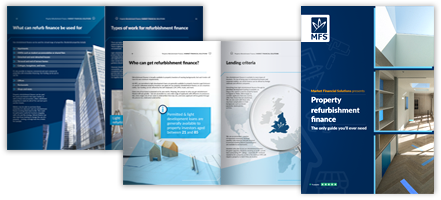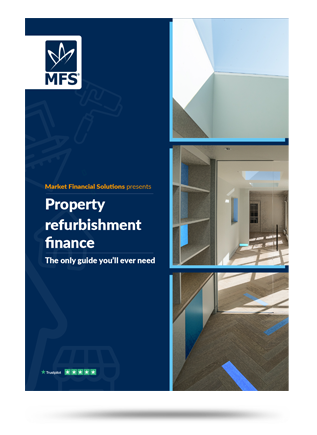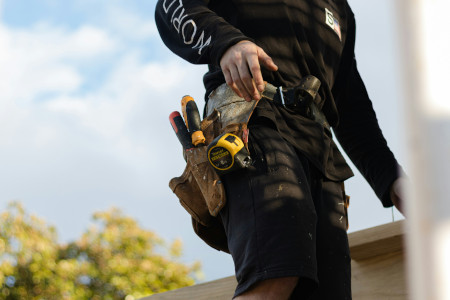Disclaimer
Market Financial Solutions are a bridging loan and buy-to-let mortgage provider, not financial advisors. Therefore, Investors are encouraged to seek professional advice. The information in this content is correct at time of writing.

Cavity wall insulation savings are possible, but just how much can be saved will be dependent on one’s circumstances. The potential savings also need to be weighed up against the costs. Cavity wall insulations aren’t free.
Investors will need to ask themselves: “is a cavity wall insulation worth it?”. The answer will depend on their budget, property type, and situation.
Still, generally, many will find that cavity wall insulations can offer plenty of benefits.
What is a Cavity Wall Insulation?
In short, cavity wall insulation is considered a simple and effective way to reduce heating bills and improve the energy efficiency of a property. By raising a home’s green prospects, cavity wall insulation savings can be generated.
If a property was built after the 1930s, it is likely that the external walls are made of two ‘skins’ with a cavity between them of around 50mm. This gap can be filled with insulating material.
This stops warm air escaping to the outside, improving the energy efficiency of a property. As a result, cavity wall insulation could effectively pay for itself in the long run by reducing heating bills. Plus, there are a range of grants and offers available that make it a more affordable renovation for property investors.
How Much Does a Cavity Wall Insulation Cost?
It depends. The costs involved will depend on a property’s size, the accessibility of the walls, the type of insulation used, the contractors worked with etc[1]. On average though, it will cost approximately £4,600 for cavity wall insulation for a detached property, according to Checkatrade.
This drops to £2,700 for semi-detached properties, £1,800 for mid-terraced homes, £2,400 for bungalows, and £950 for flats.
Generally, people should expect to pay around £30 – £65 per m² for polyurethane foam, or £25 – £30 per m² for glass wool.
Cavity Wall Insulation Savings – How Much Could be Saved?
While the costs involved may be high, the long-term savings a wall insulation can generate may make the initial investment worth it. But just how much does a cavity wall insulation save a homeowner? Well, it’s possible to save up to £245 per year in energy bills by insulating cavity walls[2].
Arguably, what’s more important here though is how much CO2 savings could be made – up to 1150KG a year for a four-bedroom detached house. With EPC minimums[3] coming back into focus, property investors will likely want to do everything they can to attain higher rankings. Cavity wall insulations could help with that.
From a strategic perspective, it may also be worth making a home as green as possible. Generally, properties with higher EPC ratings (A-B) have higher market values compared to those with lower ratings (F-G). Improving an EPC rating from G to A can raise a property’s value by up to 14%[4].

Is Support Available?
There are public support schemes available to encourage people to insulate their homes. Specifically, this involves the Great British Insulation Scheme[5]. This is a support scheme that can provide homeowner, landlords, or tenants with free or cheaper insulation to cut their energy bills.
Eligible claimants may not only get support for cavity wall insulations, but also:
- solid wall insulation (internal or external)
- loft insulation
- flat or pitched roof insulation
- underfloor insulation
- solid floor insulation
- park home insulation
- room-in-roof insulation
But, despite this support, there is pressure on the state to do more. The £1bn scheme was designed to help around 300,000 households with installation costs. But, according to the Department for Energy Security and Net Zero, there has been just 11,600 installation measures installed across 9,400 households[6].
As such, campaigners are now calling on Labour to offer further support. The government itself has confirmed it will support investment in insulation under its Warm Homes Plan, but the details are yet to be revealed.
What Types of Insulation are There?
For those who are ready to upgrade their homes and looking to save on cavity wall insulation, there are a few options they’ll need to choose from. Specifically, the key types of cavity wall insulation are mineral fibre, polystyrene beads, or spray foam[7].
Each will have their pros and cons. Mineral fibre tends to be fairly cost-effective, although it can be prone to moisture problems. Polystyrene bead insulation offers particularly good results, but it’s usually expensive. Spray foam insulation provides long-lasting protection, although it’s environmental credentials can be questionable.
Homeowners and property investors will need to decide which option is right for them.
How to Finance a Cavity Wall Insulation Installation Project
For some property investors, cavity wall insulation savings will be easy to generate, considering the installation project itself will be relatively inexpensive. However, for others, especially in the current climate, extra capital will be needed. This will be particularly true if the installation forms part of a wider refurbishment or sustainability project.
When taking on a refurbishment project, it is important for investors to understand their financial options. Specialist lending can help complete renovations in a timely manner, as funds can be issued in as little as three days.
Refurbishment bridging loans, for example, can be a quick and efficient way to finance a cavity wall insulation project amongst other things. It gives borrowers the opportunity to improve one or multiple assets in their property portfolio by completing multiple improvements in one sweep.
We have plenty of experience with these kinds of refurbishment loans. We work alongside investors or their brokers to meet deadlines and move their project along. By underwriting from day one, we can offer incredibly flexible financial products. Even for complex cases that high street lenders would struggle to process due to their tick box driven lending criteria.
The Complete Guide to
Refurbishment Finance
Everything you need to know
- Basics of refurbishment
- Different finance types
- Lending criteria & calculator
- Real life case studies
[1] https://www.checkatrade.com/blog/cost-guides/cavity-wall-insulation-cost/
[2] https://www.which.co.uk/reviews/insulation/article/cavity-wall-insulation/cavity-wall-insulation-costs-and-savings-aME221E0xDYR
[3] https://www.insidehousing.co.uk/news/labour-government-confirms-2030-target-for-epc-c-88028
[4] https://www.energyperformancesolutions.co.uk/blog/how-epcs-energy-performance-certificates-affect-the-value-of-properties-in-the-uk#:~:text=Properties%20with%20higher%20EPC%20ratings,cost%20savings%20and%20enhanced%20marketability
[5] https://www.gov.uk/apply-great-british-insulation-scheme
[6] https://inews.co.uk/news/millions-missing-out-government-energy-scheme-3170809
[7] https://www.greenmatch.co.uk/insulation/walls/cavity/best





